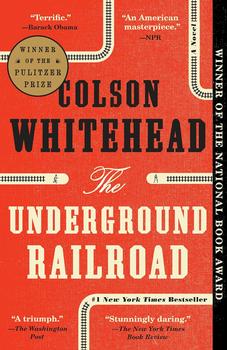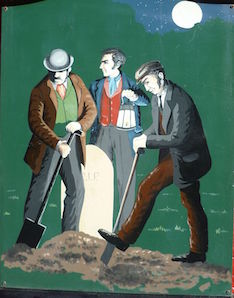Summary | Excerpt | Reading Guide | Discuss | Reviews | Beyond the Book | Read-Alikes | Genres & Themes | Author Bio

A Novel
by Colson WhiteheadThis article relates to The Underground Railroad
 Whitehead's well-researched novel The Underground Railroad offers glimpses into numerous phenomena characterizing the often-brutal experiences of black Americans in the early nineteenth century, both in the South and the North. In one section, Whitehead profiles a group of Boston-area body snatchers, spurred by demand for cadavers in the rapidly growing field of medical and anatomical research.
Whitehead's well-researched novel The Underground Railroad offers glimpses into numerous phenomena characterizing the often-brutal experiences of black Americans in the early nineteenth century, both in the South and the North. In one section, Whitehead profiles a group of Boston-area body snatchers, spurred by demand for cadavers in the rapidly growing field of medical and anatomical research.
The practice of body snatching for medical research actually dates back to the early 1300s, when four medical students in Bologna, Italy, committed the crime. As interest in anatomy grew during the seventeenth and eighteenth centuries, so did the practice of body snatching, with professional body snatchers (known as "resurrectionists") employing increasingly wily tactics and commanding high fees.
There has historically been a link between class and body snatching, with the graves of criminals, the mass graves, and the badly constructed coffins of the poor proving easy targets. In the United Kingdom, the more well-to-do even procured so-called mortsafes, or cages meant to protect graves from robbers, some of which still survive in graveyards today.
 There was also, as Whitehead's novel makes particularly vivid, a connection between race and the practice of body snatching. Although the public expressed outrage, even at one point rioting in New York City when it was discovered that a white woman's body had been disinterred, many people just looked the other way when the bodies of recently deceased black people were similarly defiled. Some sources suggested that in the late eighteenth century, few bodies remained in the black sections of New York cemeteries. And, like poor whites, African Americans often did not possess the kind of social standing, respect, or financial means that would have allowed them to advocate for additional protections for their deceased loved ones.
There was also, as Whitehead's novel makes particularly vivid, a connection between race and the practice of body snatching. Although the public expressed outrage, even at one point rioting in New York City when it was discovered that a white woman's body had been disinterred, many people just looked the other way when the bodies of recently deceased black people were similarly defiled. Some sources suggested that in the late eighteenth century, few bodies remained in the black sections of New York cemeteries. And, like poor whites, African Americans often did not possess the kind of social standing, respect, or financial means that would have allowed them to advocate for additional protections for their deceased loved ones.
Nevertheless, outcry over a particularly notorious late nineteenth century body snatching case affecting African Americans in Philadelphia ultimately led to changes in the laws: A body-snatching ring that had been targeting black cemeteries for years was prosecuted. Amid the publicity and uproar that followed the case, it became clear that there was really no way for the supply of bodies acquired legally to meet demand in Philadelphia medical schools. So the law was changed so that, in the case of unidentified, unclaimed, indigent deceased who wound up the morgues, burial at public expense was no longer the default – instead, the approved practice was for such bodies to be donated to medical research. Today most cadavers aren't bodies that were unclaimed; many schools have programs to which people can choose to donate their bodies for research and science.
Painting of body snatchers on the wall of an Inn in Scotland
A Mortsafe in Scotland
Filed under People, Eras & Events
![]() This "beyond the book article" relates to The Underground Railroad. It originally ran in September 2016 and has been updated for the
January 2016 paperback edition.
Go to magazine.
This "beyond the book article" relates to The Underground Railroad. It originally ran in September 2016 and has been updated for the
January 2016 paperback edition.
Go to magazine.




The good writer, the great writer, has what I have called the three S's: The power to see, to sense, and to say. ...
Click Here to find out who said this, as well as discovering other famous literary quotes!
Your guide toexceptional books
BookBrowse seeks out and recommends the best in contemporary fiction and nonfiction—books that not only engage and entertain but also deepen our understanding of ourselves and the world around us.